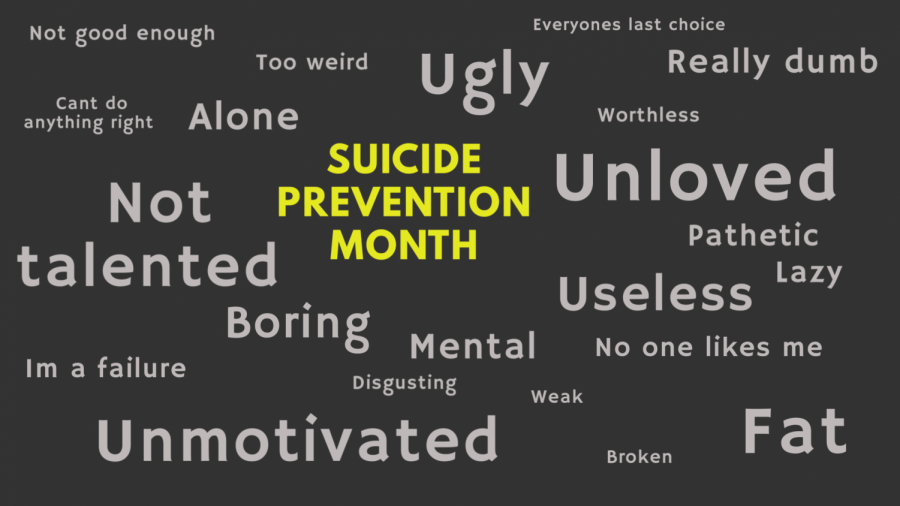“I had no idea”
September brings suicide awareness
Info-graphic that shows the mindset of someone struggling with mental illness
October 1, 2020
“When I was seven, my mom committed suicide… for the longest time, I was ashamed to say my mom killed herself and that I lived with my aunt. It just didn’t seem normal since most kids had both parents,” said senior Cyrus Sweet.
Suicide is ending one’s own life in an attempt to escape pain or suffering.
“[In middle school] I got very depressed. I didn’t have people I could talk to about this because I knew they wouldn’t understand,” said Cyrus.
According to the World Health Organization, about 800,000 people die of suicide every year; 6,200 of those are among people aged 15 to 24; this makes suicide the third leading cause of death amongst youth since 2000. With every suicide, there are three times as many attempts.
“After I did an attempt on my life and failed, I got better by asking for help from an adult that I trusted, and I found creative and positive ways of expressing my pain and emotions like drawing and writing,” said junior Lidia Wise.
Some means of prevention include early identification and treatment of mental illness, confiding in a trusted adult, or calling a crisis hotline.
According to the National Suicide Prevention Lifeline, providing support services, talking about suicide, reducing access to means of self-harm, and following up with loved ones are just some actions we can all take to help others.
Risk factors of suicide are substance abuse disorders, history of trauma or abuse, loss of relationships, and mental illnesses such as mood disorders, anxiety disorders, schizophrenia, and certain personality disorders.
“Sometimes I wish that people paid more attention [to the signs] because the signs were obvious, but at the same time, I believe it wouldn’t have made a difference in that point in my life. I didn’t want help then, and you can’t help someone that doesn’t want to be helped. No matter how hard they tried, I just wanted the pain to stop,” said Lidia.
Knowing the warning signs can help determine if a loved one is at risk of suicide. The most common warning signs include extreme mood swings, withdrawing or isolating oneself, behaving recklessly, sleeping too little or too much, and talking about being a burden to others. If you or somebody you know experiences these symptoms, seek help immediately.
Crisis hotlines in America are the National Suicide Prevention Hotline at 1-800-273-8255, the Trevor Project for LGBT+ youth at 1-866-488-7386, the Trans Lifeline at 1-877-565-8860, and the Crisis Text Line, which can be reached by texting HOME to 741-741.
“Hold on, pain ends,” notes The Depression Project.


